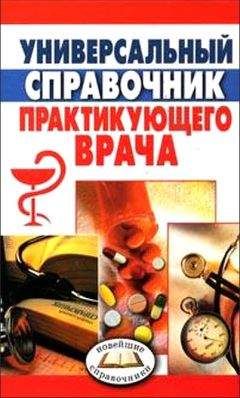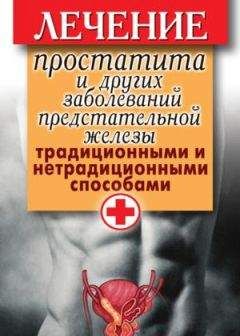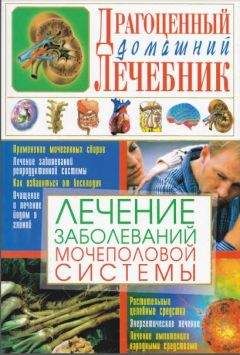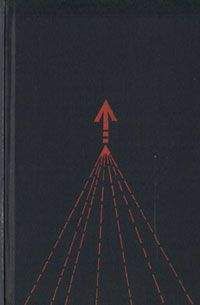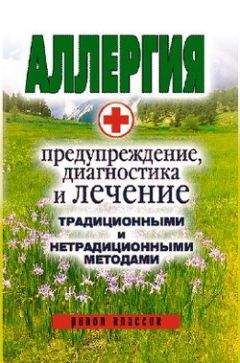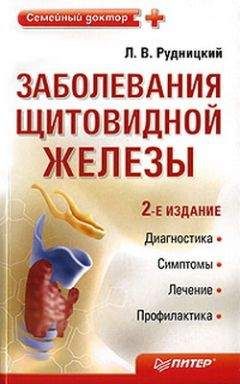Вейкко Тэхкэ - ПСИХИКА И ЕЕ ЛЕЧЕНИЕ: Психоаналитический подход
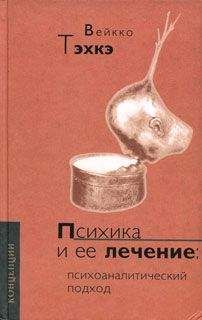
Скачивание начинается... Если скачивание не началось автоматически, пожалуйста нажмите на эту ссылку.
Жалоба
Напишите нам, и мы в срочном порядке примем меры.
Описание книги "ПСИХИКА И ЕЕ ЛЕЧЕНИЕ: Психоаналитический подход"
Описание и краткое содержание "ПСИХИКА И ЕЕ ЛЕЧЕНИЕ: Психоаналитический подход" читать бесплатно онлайн.
Вейкко Тэхкэ.
Психика и её лечение:
психоаналитический подход
В данной монографии дается описание как общей психоаналитической теории развития человеческой психики, так и теории природы и элементов психоаналитического понимания, и приложения двух этих теорий к психоаналитическому лечению пациентов, представляющих психотический, пограничный и невротический уровни психопатологии. Книга финского психоаналитика признана специалистами лучшим на сегодняшний день отражением западного психоанализа.
Книга адресована как профессиональным психологам, так и всем тем, кто интересуется данной тематикой.
Veikko Tahka. MIND AND ITS TREATMENT: A Psychoanalytic Approach
«Психика и ее лечение» Вейкко Тэхкэ – результат более чем сорокалетнего научного опыта финского психоаналитика, исследователя, клинициста и преподавателя – в действительности не одна, а скорее две книги. Во-первых, это книга о развитии психики, динамическом психическом эволюционном процессе с его самых ранних начал до достижения личной автономии и эмансипации, то есть взрослости. Со всеми возможностями на этом пути для неадекватного, нарушенного и отклоняющегося развития или недоразвития. О возникновении множества психических расстройств психопатологического спектра, явно психотических, многообразно пограничных и типично невротических. И во-вторых, эта книга о лечении, психоаналитической терапии этого множества недугов.
Cobliner, W. A. (1967), Psychoanalysis and the Geneva School of genetic psychology: Parallels and counterparts. Inter-nat. J. Psychiat., 3:82-116.
Cohen, J.,&c Kinston, W. (1984), Repression theory: A new look at the cornerstone. Internal. J. Psycho-Anal., 65:411-422.
Compton, A. (1983a), The current status of the psychoanalytic theory of instinctual drives. I: Drive concept, classification, and development. Psychoanal. Quart., 52:364-401.
(1983b),The current status of the psychoanalytic theory of instinctual drives. II: The relation of the drive concept to structures, regulatory principles and objects. Psychoanal. Quart., 52:402-426.
(1985), The concept of identification in the work of Freud, Ferenczi and Abraham. Psychoanal. Quart., 54:200-233.
De Saussure, R. (1939), Identification and substitution. Internal. J. Psycho-Anal., 20:465-470.
Deutsch, H. (1926), Occult processes occurring during psychoanalysis. In: Psychoanalysis and the Occult, ed. G. De-vereux; New York: International Universities Press, 1953, pp. 133-146.
Dollard. J. L., Doob, 1.. W., Miller. N. E., & Scars. R. R. (1930). Frustration and Aggression. New Haven, CT: Yale University Press.
Dorpat, T. L. (1976), Structural conflict and object relations conflict. J. Amer. Psychoanal. Assn., 24:855-874.
(1979), Is splitting a defence? Internal. Rev. Psycho-Anal.. 6:105-113. Druck, A. (1989), Four Therapeutic Approaches to the Borderline Patient. Northvale, NJ: Jason Aronson.
Edgcumbe, R., & Burgner, M. (1973), Some problems in the conceptualization of early object relationships. Part II: The concept of object constancy. The Psychoanalytic Study of the Child. 27:315-333. New York: Quadrangle Books.
(1975), The phallic-narcissisic phase: A differentiation between pre-oedipal and oedipal aspects of phallic development. The Psychoanalytic Study of the Child, 30:161-181. New York: Quadrangle Books.
Eissler, K. R. (1953), The effect of the structure of the ego on psychoanalytic technique, j. Amer. Psychoanal. Assn.. 1:103—143.
Emde, R. N. (1988), Development terminable and interminable II. Recent psychoanalytic theory and therapeutic considerations. Internal. J. Psycho-Anal.. 69:283-296.
Engel, G. L. (1961), Is grief a disease? A challenge for medical research. Psychosom. Mod.. 23:18-22.
Epstein, L. (1979), On the therapeutic use of countertransfer-ence data with borderline patients. Contemp. Psychoanal., 15:248—275.
Erikson, E. H. (1950), Childhood and Society. New York: W. W. Norton.
(1956), The problem of ego identity. J. Amer. Psychoanal. Assn., 4:56-121.
(1959), Identity and Life Cycle, Psychological Issues, Monogr. I. New York: International Universities Press.
Esman, A. H. (1975), The Psychology of Adolescence. New York: International Universities Press.
Federn, P. (1933), On the analysis of psychotics. Internal. J. Psycho-Anal.. 15:209-215.
(1952), Ego Psychology and the Psychoses. New York: Basic Books. Fenichel, O. (1924), From the terminal phase of analysis. In: The Collected Papers of Otto Fenichel. Vol. 1. New York: W. W. Norton, 1953, pp. 27-31.
(1941), Problems of Psychoanalytic Technique. New York: Psychoanalytic* Quarterly.
(1945), The Psychoanalytic Theory of Neurosis. New York: W. W. Norton.
(1953), The Collected Papers of Otto Fenichel. First Series. New York: W. W. Norton.
Ferenczi, S. (1919), On the technique of psycho-analysis. In: Further Contributions to the Theory and Technique of Psychoanalysis. London: Hogarth Press, 1950, pp.177-189.
(1927), The problems of termination of psycho-analysis. In: Final Contributions to the Problems and Methods of Psycho-Analysis. New York: Basic Books, 1955, pp. 77-86.
(1931), Child-analysis in the analysis of adults. In: Final Contributions to the Problems and Methods of Psycho-Analysis. New York: Basic Books, 1955, pp. 126-142.
Ferreira, A. J. (1961), Empathy and the bridge function'of the ego. J. Amer. Psychoanal. Assn., 9:91-105.
Firestein, S. K. (1978), Termination in Psychoanalysis. New York: International Universities Press.
Fliess, R. (1942), The metapsychology of the analyst. Psychoanal. Quart., 11:211-227.
(1953), Countertransference and counteridentification. J. Amer. Psychoanal. Assn.. 1:268-284.
Fraiberg, S. (1969), Libidinal object constancy and mental representation. The Psychoanalytic Study of the Child, 24:9-47. New York: International Universities Press:
Frank, J. D. (1959), The dynamics of the psychotherapeutic relationship. Psychiatry. 22:17-39.
Freud, A. (1936), The Ego and the Mechanisms of Defense. New York: International Universities Press.
(1958), Adolescence. The Psychoanalytic Study of the Child, 13:255-278. New York: International Universities Press.
(1963), The concept of developmental lines. The Psychoanalytic Study of the Child, 18:245-265. New York: International Universities Press.
(1965), Normality and Pathology in Childhood Assessments of Development. New York: International Universities Press.
Freud, S. (1894), The neuro-psychoses of defence. Standard Edition. 3:43-61. London: Hogarth Press, 1962.
(1900), The Interpretation of Dreams. Standard Edition, 4 & 5. London: Hogarth Press, 1953.
(1905), Three Essays on the Theory of Sexuality. Standard Edition. 7:125-245. London: Hogarth Press, 1953.
(1910). The future prospects of psycho-analytic therapy. Standard Edition. 11:141-151. London: Hogarth Press, 1957.
(1911a). Formulations on the two principles of mental functioning. Standard Edition, 12:215-226. London: Hogarth Press, 1958.
(1911b), Psychoanalytic notes on autobiographical account of a case of paranoia (dementia paranoides). Standard Edition, 12:3-79. London: Hogarth Press, 1958.
(1912a), The dynamics of transference. Standard Edition, 12:99-108. London: Hogarth Press, 1958.
(1912b). On the universal tendency to debasement in the sphere of love. Standard Edition, 11:139-151. London: Hogarth Press, 1957.
(1912c), Recommendations to physicians practising psycho-analysis. Standard Edition. 12:111-120. London: Hogarth Press. 1958.
(1913). On beginning the treatment. Standard Edition. 12:123-144. London: Hogarth Press, 1958.
(1914a), On narcissism: An introduction. Standard Edition, 14:69-102. London: Hogarth Press, 1957.
(1914b), Remembering, repeating and working through. Standard Edition, 12:147-156. London: Hogarth Press, 1958.
(1915a), Instincts and their vicissitudes. Standard Edition, 14:111-140. London: Hogarth Press, 1957.
(1915b), Repression. Standard Edition. 14:143-158. London: Hogarth Press. 1957.
(1915c), The unconscious. Standard Edition, 14:161-215. London: Hogarth Press, 1957.
(1915d), A case of paranoia running counter the psychoanalytic theory of the disease. Standard Edition, 14:263-272. London: Hogarth Press, 1957.
(1917), Mourning and melancholia. Standard Edition, 14:239-260. London: Hogarth Press, 1957.
(1920), Beyond the pleasure principle. Standard Edition, 18:3-64. London: Hogarth Press, 1955.
(1921), Group psychology and the analysis of the ego. Standard Edition,
18:67-143. London: Hogarth Press, 1955.
(1922), Some neurotic mechanisms in jealousy, paranoia and homosexuality. Standard Edition, 18:223-232. London: Hogarth Press, 1955.
(1923). The ego and the id. Standard Edition. 19:3-59. London: Hogarth Press, 1961.
(1924), The dissolution of the Oedipus complex. Standard Edition, 19:173-179. London: Hogarth Press. 1961.
(1925), Some psychical consequences of the anatomical distinction between the sexes. Standard Edition, 19:241-258. London; Hogarth Press, 1961.
(1926), Inhibitions, symptoms and anxiety. Standard Edition. 20:77-174. London: Hogarth Press, 1959.
(1927), Fetishism. Standard Edition. 21:149-157. London: Hogarth Press. 1961.
(1930), Civilization and its discontents. Standard Edition, 21:59-145. London: Hogarth Press, 1961.
(1933). New introductory lectures on psycho-analysis. Standard Edition, 22:1-82. London: Hogarth Press, 1964.
(1937), Analysis terminable and interminable. Standard Edition, 23:211-253. London: Hogarth Press, 1964.
(1940), An outline of psycho-analysis. Standard Edition, 23:141-207. London: Hogarth Press, 1964.
Fromm-Reichmann, F. (1950), Principles of Intensive Psychotherapy. Chicago: University of Chicago Press.
Frosch, J. (1970), Psychoanalytic considerations of the psychotic character. J. Amer. Psychoanal. Assn., 18:24-50. Furer, M. (1967), Some developmental aspects of the superego. Internat. J. Psycho-Anal., 48:277-280.
(1972), The history of the superego concept in psychoanalysis: A review of the literature. In: Moral Values and the Superego Concept in Psychoanalysis, ed. S. C. Post. New York: International Universities Press, pp. 11-62.
Furman, R. A. (1978), Some developmental aspects of the verbalization of affects. The Psychoanalytic Study of the Child, 33:187-212. New Haven, CT: Yale University Press.
Gaddini, E. (1969). On imitation. Internal. J. Psycho-Anal., 50:475-484. Garma, A. (1931), La realidad у el ello en la esquizofrenia. Arch. Neurohiol. Psicoanal., 11:598-616.
Gill, M. M. (1954), Psychoanalysis and exploratory psychotherapy, J. Amer. Psychoanal. Assn.. 2:771-798.
(1963), Topography and Systems in Psychoanalytic Theory, Psychological Issues, Monogr. 10. New York: International Universities Press.
Gillespie, W. H. (1971). Aggression and instinct theory. Internat. J. Psycho-Anal.. 52:155-160.
Giovacchini, P. L. (1969), The influence of interpretation upon schizophrenic patients. Internal. J. Psycho-Anal.. 50:179-186.
(1972), Interpretation and definition of the analytic setting. In: Tactics and Techniques in Psychoanalytic Therapy, ed. P. L. Giovacchini. New York: Science House, pp. 291-304.
(1979), Treatment of Primitive Mental Slates. New York: Jason Aronson.
(1986), Developmenlal Disorders. Northvale, NJ: Jason Aronson.
(1989), Countertransference Triumphs and Catastrophes. Northvale, NJ: Jason Aronson.
Glover, E. (1947), Basic Mental Concepts. London: Imago.
(1955), The Technique of Psycho-Analysis. London: Bailliere, Tindall & Cox.
Goldberg, A. (1983). On the scientific status of empathy. Annual of Psychoanalysis, 11:155—159. New York: International Universities Press.
Gorkin, M. (1987), The Uses of Countertransference. North-vale, NJ: Jason Aronson.
Greenacre, P. (1958), Early physical determinants in the development of the sense of identity, J. Amer. Psychoanal Assn., 6:612-627.
Greenson, R. R. (I960), Empathy and its vicissitudes. Inter-nat. J. Psycho-Anal., 41:418-424.
(1966), Discussion. In: Psychoanalysis in the Americas, ed. R. E. Litman. New York: International Universities Press, pp. 263-266.
(1967), The Technique and Practice of Psychoanalysis. New York: International Universities Press.
Grinberg. L. (1957), Projective counteridentification and countertransference. In: Countertransference, ed. L. Epstein & A. Feiner. New York: Jason Aronsorj.
(1962), On a specific aspect of Countertransference due to the patient's projective identification. Internal. J. Psycho-Anal., 31:436-440.
Hartmann, H. (1939), Ego Psychology and the Problem of Adaptation. New York: International Universities Press.
(1950), Comment on the psychoanalytic theory of the ego. The Psychoanalytic Study of the Child, 5:74—96. New York: International Universities Press.
(1952), The mutual influences in the development of ego and id. The Psychoanalytic Study of the Child. 7:9-30. New York: International Universities Press.
(1953), Contributions to the metapsychology of schizophrenia. The Psychoanalytic Study of the Child, 8:177-198. New York: International Universities Press.
(1955), Notes on the theory of sublimation. The Psychoanalytic Study of the Child, 10:9-29. New York: International Universities Press.
(1956), Notes on the reality principle. The Psychoanalytic Study of the Child, 11:31-53. New York: International Universities Press.
(1964), Understanding and explanation. In: Essays on Ego Psychology. New York: International Universities Press, pp. 369-403.
Kris, E., & Loeweristein, R. M. (1946), Comments on the formation of psychic structure. The Psychoanalytic Study of the Child, 2:11-38. New York: International Universities Press.
(1949), Notes on the theory of aggression. The Psychoanalytic Study of the Child. 3/4:9-36. New York: International Universities Press.
(1964), Papers on Psychoanalytic Psychology, Psychological Issues, Monogr. 14. New York: International Universities Press.
Loewenstein, R. M. (1962), Notes on the superego. The Psychoanalytic Study of the Child. 17:42-81. New York: International Universities Press.
Hartocollis. P. (1983), Time and Timelessness. New York: International Universities Press.
Heiman, P. (1950), On Countertransference. Internal. J. Psycho-Anal., 31:81-84.
(1960), Countertransference. Brit.J. Mod. Psychol., 33:9-15. Hendrick, 1. (1951), Early development of the ego. Psychoanal. Quart., 20:44-61.
Hoch, P. H., & Polatin, P. (1949), Pseudoneurotic forms of schizophrenia. Psychiat. Quart., 23:248-276.
Hoffer, W. (1952), The mutual influences in the development of ego and id: Earliest stages. The Psychoanalytic Study of the Child. 7:31-41.
Jacobson, E. (1954), The self and the object world: Vicissitudes of their infantile cathexes and their influence on ide-ational and affective development. The Psychoanalytic Study of the Child, 9:75-127. New York: International Universities Press.
(1964), The Self and the Object World. New York: International Universities Press.
(1971), Depression. New York: International Universities Press. Joffe, W. G., & Sandier, J. (1965), Notes on pain, depression and individuation. The Psychoanalytic Study of the Child. 20:394-424. New York: International Universities Press.
Karush. A. (1967), Working through. Psychoanal. Quart., 36:485-531.
Kernberg, 0. F. (1965), Notes on Countertransference. J. Amer. Psychoanal. Assn., 13:38-56.
(1966), Structural derivatives of object relationships. Internal. J. Psycho-Anal.. 47:236-253.
(1967), Borderline personality organization,}. Amer. Psycho-anal. Assn., 15:641-685. (1972), Early ego integration and object relations. Ann. NY Acad. Sci., 193:233-247.
(1972), Early ego integration and object relations. Ann. NY Acad. Sci., 193:233—247.
(1975), Borderline Conditions and Pathological Narcissism. New York: Jason Aronson.
(1976), Object Relations Theory and Clinical Psychoanalysis. New York: Jason Aronson.
(1980), Internal World and External Reality. New York: Jason Aronson.
(1982), Self, ego, affects and drives. J. Amer. Psychoanal. Assn., 30:893-917.
(1984), Severe Personality Disorders. New Haven, CT: Yale University Press.
(1987), Projection and projective identification. In: Projection, Identification, Projective Identification, ed. J. Sandier. Madison, CT: International Universities Press, pp. 93-115.
Selzer, M. A., Koenigsberg, H. W., Carr, A. C, & Appel-baum, A. H. (1989), Psychodynamic Psychotherapy of Borderline Patients. New York: Basic Books.
Klein, M. (1940), Mourning and its relation to manic-depressive states. In: Contributions to Psycho-Analysis. London: Hogarth Press, pp. 311-338.
(1946), Notes on some schizoid mechanisms. Internal, J. Psycho-Anal., 27:99-100.
Knight, R. P. (1940), Introjection, projection, and identification. Psychoanal. Quart.. 9:334-341.
Подписывайтесь на наши страницы в социальных сетях.
Будьте в курсе последних книжных новинок, комментируйте, обсуждайте. Мы ждём Вас!
Похожие книги на "ПСИХИКА И ЕЕ ЛЕЧЕНИЕ: Психоаналитический подход"
Книги похожие на "ПСИХИКА И ЕЕ ЛЕЧЕНИЕ: Психоаналитический подход" читать онлайн или скачать бесплатно полные версии.
Мы рекомендуем Вам зарегистрироваться либо войти на сайт под своим именем.
Отзывы о "Вейкко Тэхкэ - ПСИХИКА И ЕЕ ЛЕЧЕНИЕ: Психоаналитический подход"
Отзывы читателей о книге "ПСИХИКА И ЕЕ ЛЕЧЕНИЕ: Психоаналитический подход", комментарии и мнения людей о произведении.








